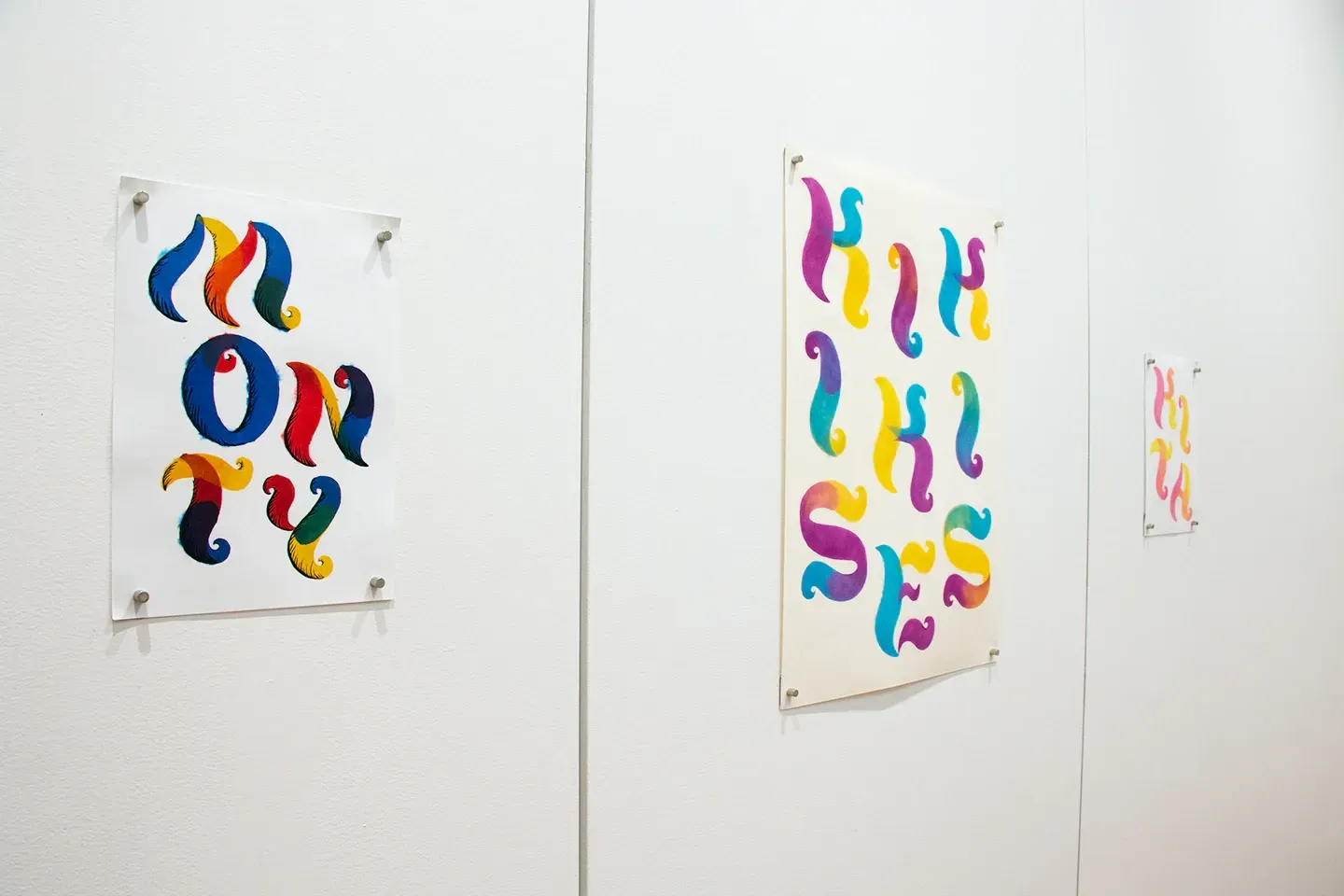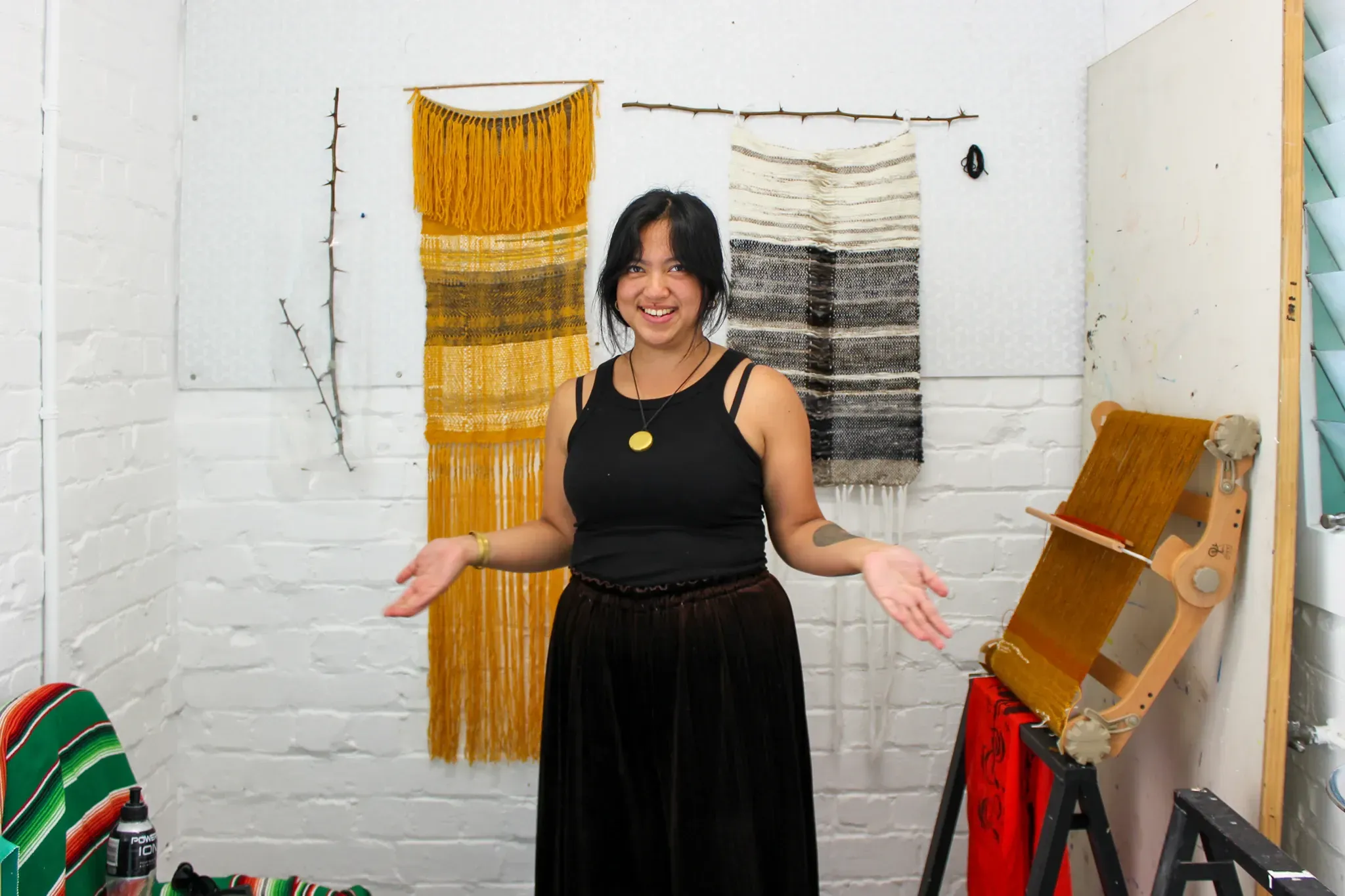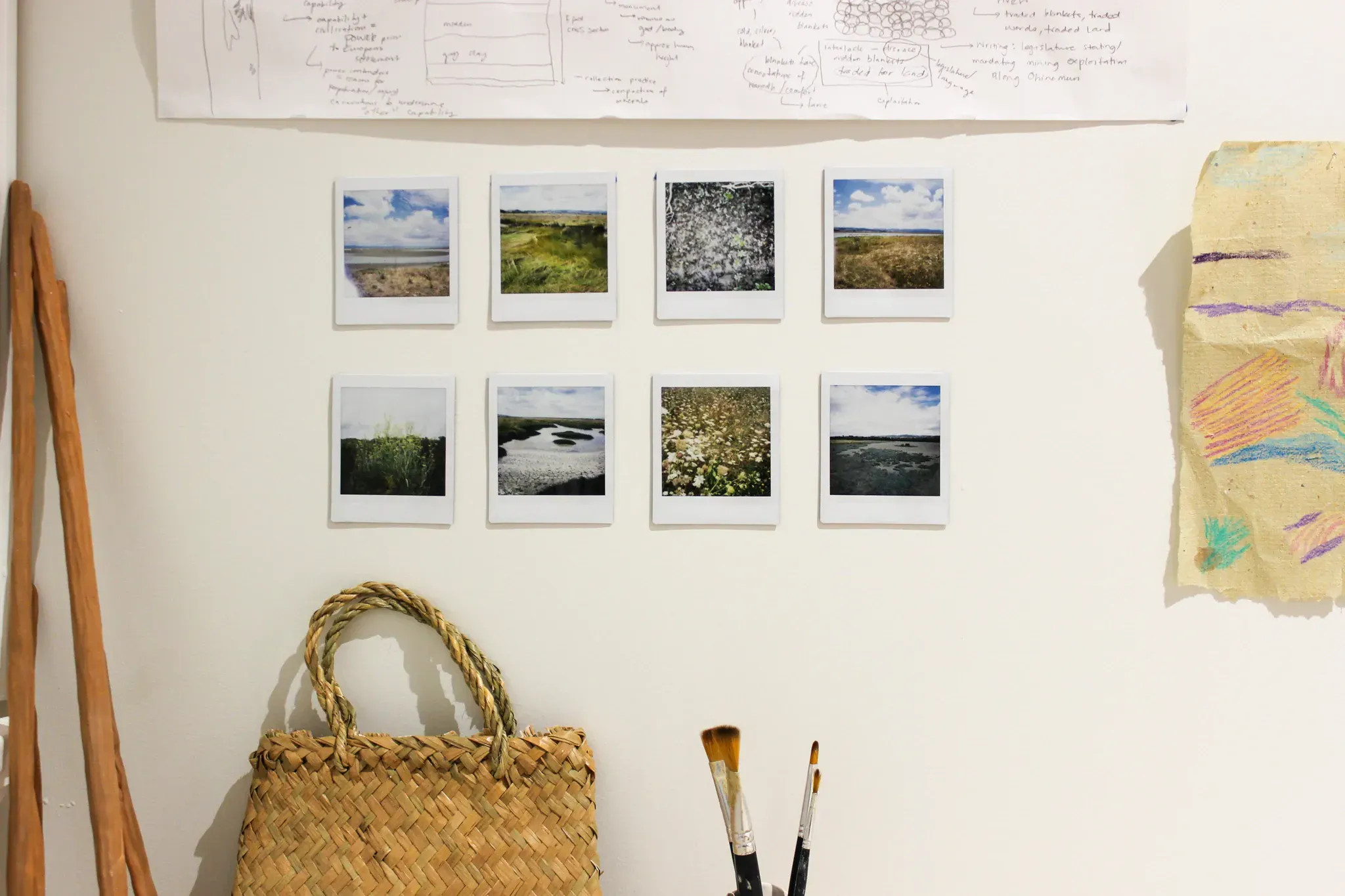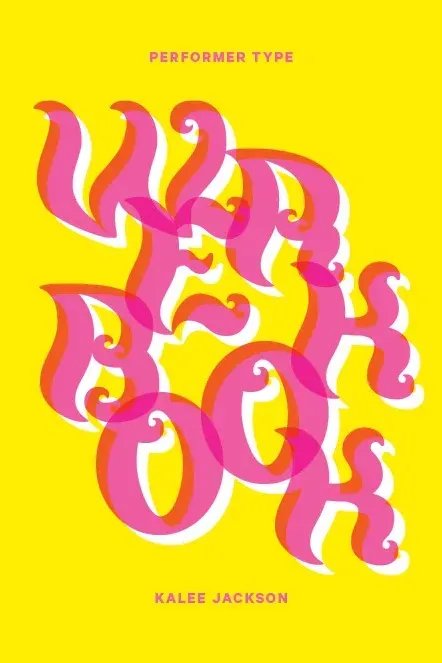Residencies Open Minds During Lockdown
Written by

Three very different creatives, three very different projects.
But there is one connecting theme to Studio One Toi Tū Creative Studio Residents Exhibition (running through until 31 March) - a committed passion to representing their respective communities.
The Ponsonby Road creative institution has a reputation for supporting local artists by providing studio space to allow their creativity to flourish. Successful 2021 Creative Studio Residents Kalee Jackson, Ashleigh Taupaki and Esther Toclo were given the opportunity to dedicated time and access, mentoring and networking support over a 10 month period to work on their craft.
The result of their mahi is now on display.
“With a turbulent year and limited access to their studios, this year's residents have been working extremely hard to put together a fantastic line up of exhibitions. I applaud them for their resilience and commitment to their art practice. This is an outstanding finale for the 2021 residency” says Siobhan Connelly Studio One Toi Tū’s Manager Community Place – Arts Manager.
Burlesque meets typography
Jackson’s residency involved conversations with drag and burlesque performers on their practice and relationship to Karangahape Road as a site of performance.
Looking at common threads and differences within this performance community, interviews with a range of performance artists were used as a starting point to develop a typeface which responds to contemporary drag and burlesque performance practice.
A designer working mainly with typography, Jackson is also a title-holding burlesque artist and occasional drag performer. They told The Big Idea “I thought it would be interesting to combine these skills and interests.
“I was inspired by performing and by personal connections with performers that I’ve built up over the years, they’re a kind, passionate and fearless motley assortment of wonderful humans. The shapes in the typeface are inspired by the exaggerated shapes in bouffant wigs and stylised makeup for the stage – all volumptuous curls and eyeliner flicks.”
Jackson outlines the main purpose of my residency was to create a typeface. “Initially the conversations with performers were intended as a relatively small part of the research process, but it quickly became an entire project in its own right.”
Though they are quick to add “ I did actually make the typeface! It’s in beta version now – it works functionally, though there are some refinements that I want to make. I think the typeface family will expand to sit conceptually with some ideas that came out of the research.”
The result of the residency, Performer Type: Werkbook is now available with Jackson taking orders.

“I’m proud of the work that I put in. It feels more like a starting point than an ending.
“There are still quite a few performers who I am itching to talk to about their practice. The typeface will continue to be refined and expand, hopefully to reflect more of the multiplicities of performance on K’ Road. I don’t think I’ll ever stop working with type, it’s endlessly fascinating to me.”
Resourceful experience
Taupaki’s residency project was also inspired by an area close to her heart. Kopu - a – tai explores the unique environment of the Kopuatai Peat Dome, a large-scale wetland in the Hauraki region through sculptural forms in clay, found objects and photographs focussing on ancestral ties to the land through an indigenous lens.
The experience proved more than just artistic for Taupaki. “The staff were so lovely and always there to say hi and have a chat. I was set up in the sculpture studio and was free to make a mess - within reason - and found that I had more than enough space.
“I think the best thing about it was that there weren't any huge pressures during the residency. They understood that COVID was a factor and postponed the exhibition dates accordingly. They also allowed us to use their facilities and other spaces, which helped because I used a kiln for the first time ever and that was pretty awesome.”

Ashleigh Taupaki's residency work. Photo: Supplied.
She explained to The Big Idea “I was drawn to the residency because I knew that Studio One facilitated a lot of sculptural workshops, which is something I wanted to take advantage of. I really wanted to make some ceramics during my time there, and although I didn't really use them in my final installation, I have a tonne of clay objects that have inspired new ideas for future shows I have planned.”
Taupaki has a full plate in front of her - she will continue her doctoral research at Elam, curate a large scale Matariki exhibition in June, and take on a Te Whare Hera residency in Wellington in July.
But her time at Studio One Toi Tū has left a lasting impression.
“I feel sad that I have to leave, but I know that I will be back to attend openings, workshops, and maybe learn to glaze my ceramics.
“I have seen a major shift in my work from the beginning of the residency to now, and I know that it's partly to do with COVID and being forced to be resourceful, and partly because of my proximity to the Studio One kiln and feeling that I should try new mediums.”
Passed through generations
That experimental experience began a few years ago for Toclo.
“In 2018, an Aunty in my Igorot-Filipino community told me one of the elders used to practice abel (weaving) in her younger years,” Toclo explains.
“She was incredibly skilled - she showed me her old textile works & told me about the ones she made for her family. There was so much intricate care and love put into the pieces, it was amazing.
“In exchange for her showing me the basics of backstrap weaving once or twice a week for about a month, I taught her how to use her iPad to video call her grandchildren back in the Philippines. It was as much a language lesson as it was a craft lesson!"
That trade of skills has worked out wonderfully for Toclo. Her residency work Kailiyan explores the complex connections of her indigenous identity as an Igorot-Filipino living in Aotearoa. Through traditional weaving practices and photography, Toclo reflects on her personal experiences of the displacement that comes with migration.

Esther Toclo. Photo: Supplied.
“I weave with fibre sourced from op shops. I try not to purchase new threads unless it's necessary for the project, there's too much textile waste already & it's quite fun to investigate the quality of the mystery threads.
“Sometimes I weave with plants through the weft, for this I forage around local parks or overgrown curbsides, never taking more than half to allow plants to regenerate.”
Opportunities like the Studio One residency aren’t taken for granted by artists like Toclo. “It's not easy to pursue - and then sustain - a creative route with an industry that doesn't provide any form of long term stability, unless you're lucky or privileged. The amount of talent and hard work in Aotearoa is incredible but I know a lot of folks are exhausted so I really don't know how the future of the arts will shape out to be.
“I can only hope that we can see each other through these rough times & the coolest thing is I am seeing a few established artists who are forming independent creative platforms to provide opportunities to others.“
Written in partnership with Studio One Toi Tū. The Creative Studio Residents Exhibition runs until 31 March at 1 Ponsonby Road, Auckland.


